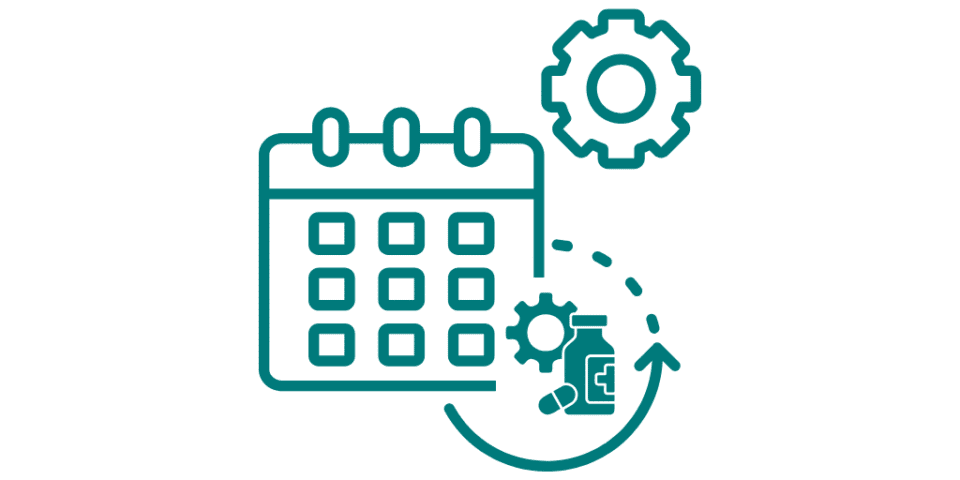
Start early, document thoroughly. That’s the lesson for getting through the new drug application or biologics license application (NDA/BLA) process. Long before marketing approval, companies developing new products must apply to conduct clinical trials by submitting an investigational new drug (IND).
Your IND amounts to a blueprint for the rest of your program, so it’s important to gather all the information you will require. That includes information on the efficacy of your active ingredient, batch specifications to ensure uniformity, storage units, excipients and, in the case of novel excipients, information about the process for making that excipient. Ed Narke, cofounder and chief regulatory scientist at DSI, a ProductLife Group company, describes it as the recipe for making your drug product consistently.
“If you keep a record of all this information, what you’re expecting in each area, when you expect to get data and how much, it can go toward your regulatory strategy document, which, eventually, along with updates, becomes your NDA,” Ed says.
A common question regulatory consultancies get when clients come to them for support with their NDA is, “why does it take so long to write an NDA compared with an IND?”
The length of time involved tends to depend on the type of company. Vertically integrated, large pharmaceutical companies with plenty of resources will have put together a very well-defined IND with just enough information, while holding back R&D data that either may be used later or will never be used because of likely changes.
Small, emerging biotechnology companies, many of which may have started in academia, may have filed a very basic IND. The company then gets to Phase 2 or Phase 3 and starts to see good efficacy data and suddenly needs to file an NDA.
“However, you’re starting from an IND that includes maybe 5 percent of what’s needed in the NDA,” Ed says. “You don’t have the conformance information, how you got to this process, how the process has been scaled and controlled, how changes in the process affect the control of the product, how the methods were selected, if they were qualified and why, and how were they validated. Because the idea has not been properly developed in the lead up, you’re going to have to do a lot of work putting an NDA together.”
What’s the story?
Another consideration in the lead up to preparing an NDA is building a storyboard that brings together messaging from the different functions – regulatory, analytical, quality assurance, business development, marketing – to create alignment and ensure transparency with everything that goes into the submission. The company can then transform this storyboard into the IND or NDA, built on source information. “That’s the art of writing a submission,” Ed says.
Beyond that, though, you need to consider the health authority perspective. Does the story make sense to them? The only way to really develop this type of understanding is through experience.
“You have to help the reviewer address two questions: where does the sponsor want the reviewer to go, versus where does the science tell the reviewer to go,” Ed says. “What both parties need to consider is ‘what does common sense tell me?’”
Authoring and quality control
Even if your IND is fairly comprehensive, the authoring and QC’ing of your NDA document will be complex, bringing together a cross-functional team of experts to generate high-quality documents. The process begins with gathering the source information — GMP documentation, the batch records, development reports, specifications, methods, etc.
“Take an inventory of what you have before you start authoring, because some information may interrupt how you write things or the order in which you prepare your content,” Ed says. “You’ll want to do a content review. You’ll want to get group consensus on how that material and information will be put together and cross-referenced. You’ll want to do some data accuracy checks, especially for questionable source information. And, ultimately, you’re going to want to format it.”
Following the structure based on the common technical document (CTD) format is key, DSI general manager Brian Lihou adds.
“We will start with a pre-determined checklist of documents broken down by section,” Brian says of DSI’s process. “The client will put them in a file transfer site based on where they need to go, so you have all of your sources of information broken down by the sections. You ask for all agency correspondences, anything that paints the flavor of the document that you’re going to write, any past or future commitments. Then you have the regulatory expectations, which a regulatory author will draft. Then we’ll have our technical person QC those sections against the relevant source information. Next, there are comments and a regulatory strategy check to make sure you’re telling a cohesive story. Version control is essential. You make sure that you control what gets sent and what comes back.”
There is always a push to get the NDA completed quickly to speed up the submission process. That’s where starting early with the writing, right from the IND, and continuing that process throughout, is key. Ensure transparency for each section as it is written, keep track of information you are waiting to receive, and work out differences in interpretations before anything’s finalized.
There is always a balance between timelines and quality. Having checks and balances in your authoring workflow is key to how efficiently you remediate questions and comments.
“Having that transparency per section throughout the CTD helps everyone overall. Sometimes it is a bit cumbersome and labor-intensive, but it pays off in the long run, especially when you’re working in a relatively condensed timeline,” Brian says.
Here, there, and everywhere
Today, companies need to think about authoring and developing their NDAs or BLAs for multiple markets. While the U.S. might be where you do your first NDA, there is a patient population in Europe and other markets for your products, so filing in other regions or licensing out the rights to those markets does make sense.
While the CTD developed by the International Council for Harmonization (ICH) does serve as a common global structure for drug development, there are regional differences.
“There are certainly stability requirement differences and even specification differences,” Ed says. “Then if you get into biologics, there are quite a number of significant differences.”
Companies considering rest-of-the-world NDAs should consider the different requirements when developing their regulatory strategy document as well as the ramifications for the business in general, and whether you are building value.
Be prepared
Whenever and wherever you are filing an NDA, you need to prepare responses for anticipated questions so you aren’t losing time. Remember, there will always be questions, so make sure you have a gameplan.



